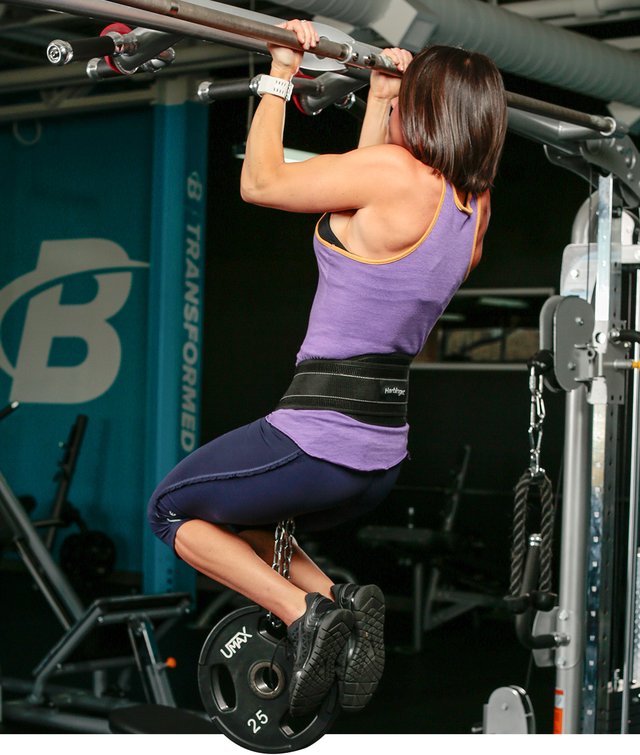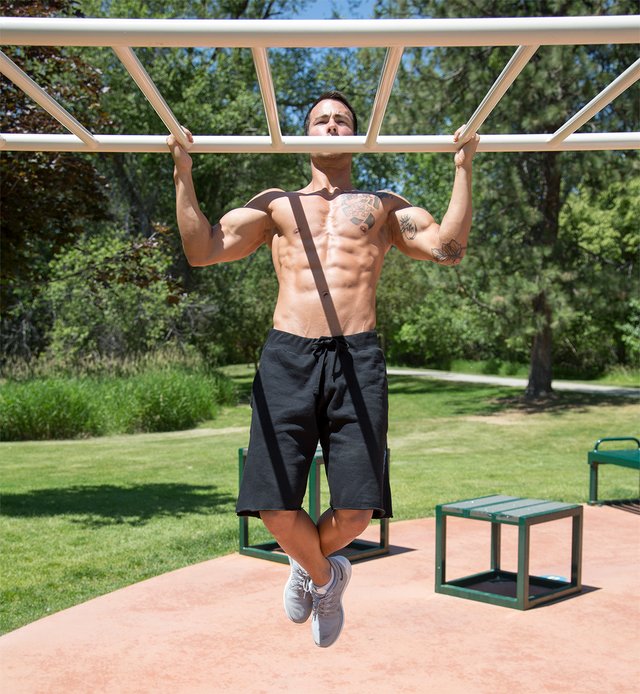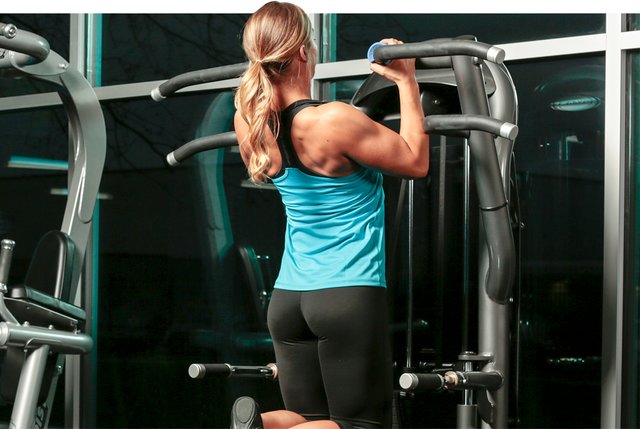Love the muscle-building effects of chins but hate the tweaks they can cause? You might just need a more balanced approach. Here's your year-long plan for pain-free pulls!
For years, we've been told to avoid behind-the-neck pull-downs and pull-ups. The reasons are pretty well-known by now. They place a tremendous amount of stress on the shoulders when lifting a heavy load, with the humerus abducted and in a position of maximum external rotation. Anatomically, it's a problem waiting to happen. Furthermore, it's not a "natural movement."
"Natural"—that's one you'll hear a lot. It implies that we're not really meant to pull things behind our head in that manner, nor do we ever have to in our lives. Even in the animal world, you don't see monkeys pull themselves up like that. They know it's not natural!
I'm being dramatic, but there is solid logic to this line of thinking. Now, consider the chin-up, and specifically the version that is performed with a supinated (palms facing you) grip, not a neutral or mixed grip. Does that movement pass the sniff test? Is it a "natural" movement?
I argue that it's not—but that's no reason to kick it to the curb. It's just a reason to be more strategic in the way you perform this movement.
Give Your Pulls The Press Test
Got a sec? Raise your arms up over your head. Notice how your palms are either facing forward or each other. I guarantee they're not facing back! In fact, it's probably pretty uncomfortable to even try.
Now think of that movement in an exercise setting. How often do you press a barbell overhead with a supinated grip? You may do an overhead dumbbell press, where you start with a supinated grip at the bottom, but end with a pronated grip at the top, often referred to as an Arnold press. Or you may do a reverse-grip bench press. Honestly, if I review your training logs for the past five years (and I know that every Bodybuilding.com reader is smart enough to have a training log), I'm sure I'll see a variety of overhead presses using various implements and grip widths, but the grip orientation will always be either pronated or neutral.

I say this to highlight the fact that there's no true antagonistic movement for the chin-up. A reverse-grip row can be coupled with a reverse-grip bench press, for example, and any supinated arm curl can be coupled with a reverse-grip press-down. But chin-ups are all alone. That alone should set off a red flag. A muscle imbalance is sure to occur if you do enough of them!
Now, don't get me wrong; I love chin-ups. I've done them all my life, and once upon a time, I could do reps with an additional 100 pounds around my waist with strict form. But I've also had problems with my elbow and shoulder joints. I've injured my biceps on both the proximal end (both sides) and the distal end (left side). Were the chin ups totally to blame? Perhaps not, but I'm pretty sure they didn't help.
So… Are Chin-Ups Out?
Is this classic movement worth it? I've been pondering that question over the past year, and guess what? I still do chin-ups. It's hard to give them up, because the positives at the moment still seem to outweigh the negatives.
The positive, of course, is that chin-ups are great at building muscle. They hit the biceps, posterior delts, and lats, not to mention the effect they have on the core. When getting the most bang for the buck is the goal, they're tough to beat.

So yes, I do them. However, I don't only do them.
Here's how I now structure my pull-up and chin-up training. If you're a chinning fan who is wondering why your joints are barking, I recommend you try it.
- Month 1: Pronated pull-ups
- Month 2: Neutral-grip pull-ups
- Month 3: Supinated chin-ups
- Month 4: Pronated pull-ups
- Month 5: Neutral-grip pull-ups
- Month 6: No pull-ups
How should you structure your training during these months? There are many ways, depending on your goals. For strength or to build up to weighted chins, it's tough to beat using relatively low reps—like 6, or even lower—and a high number of sets—like 5-6 or more. That's the approach I include in my Three-A-Day Plan to Force Results.
If your goal is hitting 20 clean, consecutive reps, then of course you'll need some higher-rep work in there as well.
After my month off, I'll repeat that cycle to finish out my year of training. So while I still perform supinated-grip chin-ups, I do it during only two months out of the year. The bulk of my pull-ups or chin-ups are performed with a pronated grip or neutral grip, respectively, which reflects my overhead-pressing patterns.
Pushing and pulling in this manner is a good way to maintain muscle balance around a joint, particularly as you age.
The Perfect Dose Of Pulling
Many of us, coaches included, are quick to modify presses or remove them altogether if they're giving us a problem. But rarely do pulling movements get the same level of scrutiny.

"If it hurts, don't do it," is, and will always be, great advice. But what doesn't hurt you now may hurt you in the future. Balance between pressing and pulling movements is important, but consider taking the same approach to your grip, and you'll be better set to progress without pain.
No comments:
Post a Comment